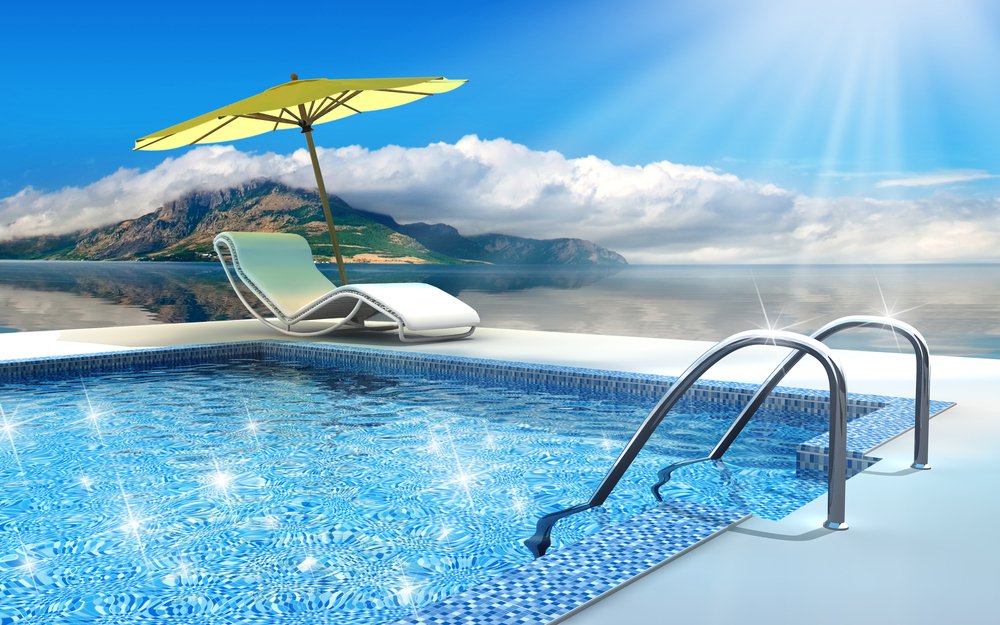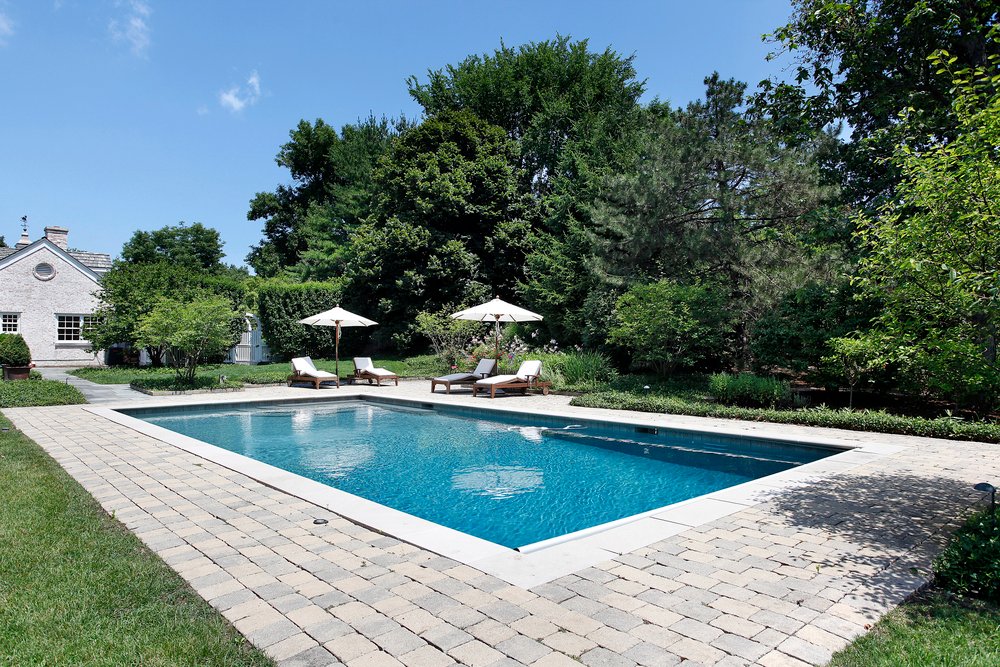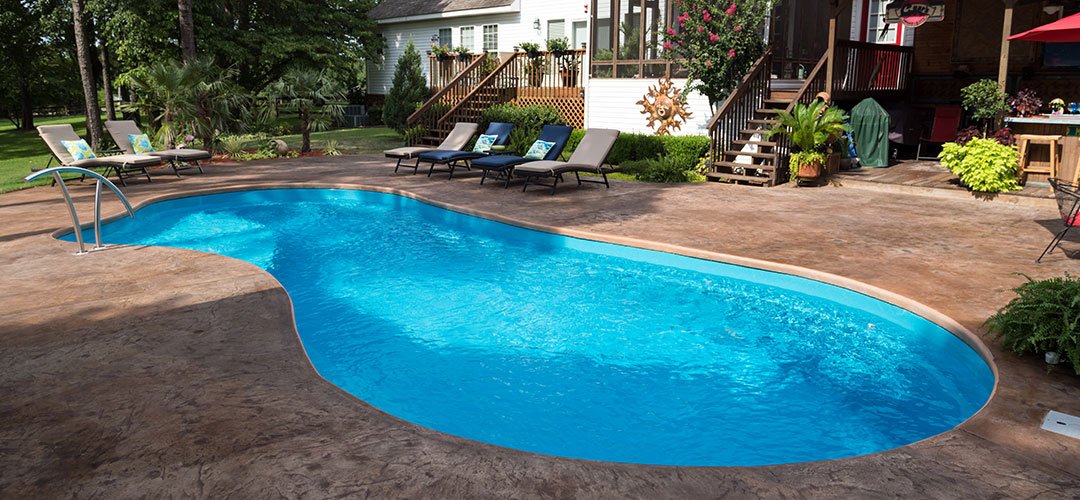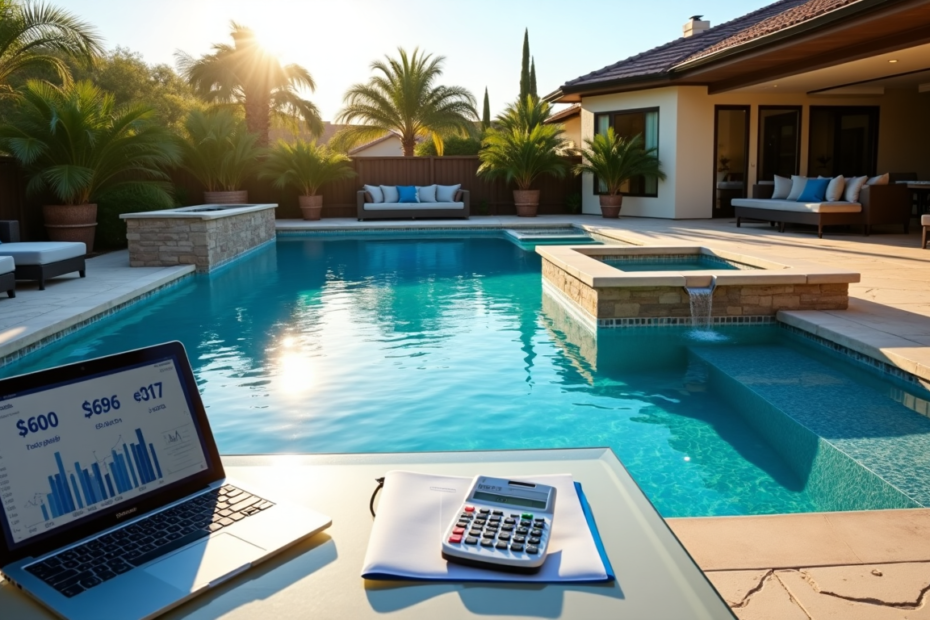Swimming pools boost Los Angeles home values by $95,000 compared to similar properties without them – a 10% premium homes with pools. The pandemic has made pools more desirable assets nationwide, adding an average premium of $27,199 to home values.
Pool ownership’s financial benefits vary based on your location. Property listings with pools typically command an 8% higher price, though the actual returns differ substantially. Your investment could range between $35,516 and $65,067 for installation costs. Let us help you determine whether a pool makes financial sense for your property. This piece breaks down a pool’s real value contribution to your home in 2025 based on your location, upkeep expenses, and current market trends.
The Real Impact of Pools on Home Value in 2025
The swimming pool market keeps changing in 2025. Property values nationwide feel the ripple effects of these changes. Let’s explore the current data, pandemic influences, and key regional differences to understand these effects better.
Current market data on pool premiums
Swimming pools remain a big investment for homeowners. The pool market should reach $3.54 billion in 2025 with a steady growth rate of 0.7%. The pool and spa sector looks even stronger. Experts expect it to grow from $20.67 billion in 2024 to $22.03 billion in 2025 at 6.6% CAGR.
Home values tell an interesting story. Realtor.com’s analysis shows homes with pools list for about 8% higher than similar homes without them. The return on investment varies a lot though. The National Association of Realtors’ 2023 Remodeling Impact Report shows homeowners get back about 56% of their original pool investment.
How the pandemic changed pool valuations
Pool ownership’s added value was dropping before COVID-19 hit. The extra value pools brought fell from 10% to just 6% between 2017 and 2019. The pandemic changed everything.
Families stayed home with limited travel options. Backyard pools became must-have features. The pool industry grew by an amazing 24% during this time. This need for pools changed both values and costs permanently.
Pool installation costs jumped 30% since 2021. Pool premiums started rising in 2021 and kept going up. They did drop briefly when mortgage rates increased in 2022.
Regional variations in pool value
Location makes a huge difference in a pool’s financial benefits. Warm-weather areas where people can swim all year see much higher values than cold places with short swimming seasons.
Fort Myers, Florida leads the pack. Pools there add an amazing 20.4% premium to median home list prices of $539,000. Pittsburgh, Pennsylvania might surprise you – it ranks fifth nationwide with pools adding an 11.5% premium to home values.
The neighborhood itself plays a vital role in how pools affect property values. Upscale areas where everyone has a pool might see lower values for homes without one. But in places where pools are rare, having one could make your property stand out and boost its appeal.
Think about more than just the $35,000 average cost of standard in-ground pools. Your local climate, neighborhood standards, and what buyers in your area want all matter just as much.

Calculating Your Pool’s Value: Key Factors
Swimming pools can boost your property’s value, but not all pools are equal. You need to recognize specific factors that affect valuation to make smart decisions about installation, upgrades, and maintenance.
In-ground vs. above-ground pool value differences
Your choice of pool type makes a big difference in potential returns. In-ground pools generally add 5-8% to property value. Above-ground pools add nothing to your home’s appraisal value.
Home appraisers don’t call above-ground pools permanent structures. These pools remain temporary additions despite any investments in decking or landscaping. In-ground pools, however, can boost your landscape and create beautiful views from inside your home.
The price gap is substantial—in-ground pools typically range from $25,000 to $100,000 for installation, while above-ground pools cost between $1,800 and $5,000. Your installation choice directly affects potential returns during a home sale.
Pool size and design considerations
Pool materials are vital in valuation. Concrete pools often bring higher valuations than vinyl or fiberglass options because of their durability and customization potential. The size and yard integration substantially affect what buyers think.
Pools that blend with the yard and leave room for landscaping add more value than those dominating the entire outdoor space. Pools that take up the whole yard with pavers and water often reduce appeal instead of raising it.
On top of that, the pool’s shape affects both appeal and functionality. In-ground pools offer countless customization options. Above-ground pools come only in round or oval shapes. This design limitation affects potential value appreciation.
Age and condition impact on valuation
Your pool’s condition substantially affects its appraised value. Pools with updated equipment and attractive landscaping raise property value. Pools in poor condition might decrease your home’s worth.
Problems that hurt valuation include:
- Resurfacing needs
- Outdated or failing equipment
- Unrepaired leaks
- Deteriorating deck areas
A neglected pool needing extensive repairs can turn from an asset into a liability and scare away buyers instead of attracting them. The pool’s age affects both perceived value and maintenance needs, and older pools often need more upkeep.

Luxury features that boost pool value
Premium features can turn a basic pool into a luxury retreat while raising property value. The most value-enhancing features include:
- Fire features like bowls or pits that create ambiance and extend seasonal usage
- Tanning ledges/sun shelves providing shallow areas for relaxation
- Waterfalls and water features adding visual appeal and soothing sounds
- Strategic LED lighting enhancing nighttime esthetics
- Swim-up bars creating resort-like entertainment spaces
Real estate experts say these premium elements can raise your pool’s contribution to overall property value. Many luxury markets now expect these features from discerning buyers.
These factors help homeowners make smart decisions about pool investments. Looking beyond lifestyle enhancement and thinking over these valuation elements leads to better financial planning for this major home improvement project.
Regional Pool Value Calculator: Where Pools Add Most Value
Your location plays a huge role in determining pool value, and the returns vary significantly across the country. The local climate determines how much you can use your pool and what buyers expect. This creates notable differences in value from one state to another.
Warm climate regions (Florida, Texas, Arizona, California)
Sunny states show the highest pool value premiums in the country. Los Angeles homeowners see their properties sell for an astounding $95,393 more than similar homes without pools. Properties in Austin and Orange County add over $50,000 to their value with pools.
Fort Lauderdale’s market stands out with pools in 45.6% of home sales and adds about $36,000 to property values. Buyers in year-round swimming markets clearly value these features.
Phoenix offers interesting insights about economic differences. Pools add just $11,591 to average home values, but the premium changes based on the price point. Homes under $200,000 see pools as a liability because of maintenance costs. Yet luxury homes above $700,000 need them as standard features.
Moderate climate regions
Areas with mid-range climates show good but smaller pool premiums. Charlotte, North Carolina homes gain nearly $35,000 in value with pools, though only 2.2% of sales include them. The lack of pools makes them more valuable.
Tampa shows how moderate climates still value pools. They add about $30,000 to home values and appear in 29.6% of listings. Pittsburgh might surprise you – homes with pools there sell at an 11.5% premium.
These regions share longer but not year-round swimming seasons. This creates a sweet spot between usefulness and upkeep costs.
Cold climate considerations
Pools make poor investments in areas with freezing winters. Boston remains the only cold-weather market in Redfin’s detailed study. It’s also the only place where pools reduce home values by more than $15,000 on average.
Several practical issues cause this negative effect. Cold climates need extensive winterizing, including partial draining, chemical treatment, and professional-grade covers. These specific maintenance needs add costs while limiting pool use.
Concrete pools in freezing areas risk structural damage from freeze-thaw cycles. They often develop cracks that lead to leaks and costly repairs.
Neighborhood expectations factor
Community standards shape pool valuation significantly. Homes without pools might sell for less in neighborhoods where most properties have them. Pools become must-have features in certain upscale areas.
The reverse happens in areas where pools are uncommon. A new pool might make your home stand out or become an unwanted expense depending on who’s buying.
Pool values depend on climate, local housing inventory, neighborhood patterns, and economic factors that shape what buyers want in your market.

Cost vs. Value: Understanding Pool ROI
A swimming pool adds more than just value to your property – it’s a major financial commitment. Let’s get into both sides of the story to figure out what your pool investment really means.
Original installation costs breakdown
The money you’ll need starts with installation. In-ground pools cost about $65,000, and prices range from $25,000 to $100,000 based on what materials and design you choose. Above-ground pools are a better match for tight budgets at $1,800 to $5,000. You’ll pay $25,100 to $46,300 for fiberglass pools, while specialty options like lap pools can set you back $80,000.
Ongoing maintenance expenses
Annual maintenance is a cost that never goes away. Most pool owners spend $1,560 to $2,700 every year on basic upkeep like chemicals, cleaning, and fixes. This comes to about $80 to $150 monthly if you hire professionals. You could spend $500 to $800 yearly if you do the work yourself.
Your utility bills will go up too. The pumps and filters will add $300 to $500 yearly to your electricity costs. Water bills will climb $4 to $20 monthly just to replace what evaporates.
Insurance premium increases
Your insurance costs will rise because pools increase liability risks. Pool owners usually pay more for coverage, with premiums jumping $20 to $25 monthly. Insurance companies often need you to install safety features like fenced areas with locked gates. Many won’t even cover certain risky additions like diving boards.
Calculating your break-even timeline
The return on investment for most pools falls between 5% and 56%. The National Association of Realtors says you’ll typically see about 56% ROI. This means if you spend $90,000 on installation, your home’s value might increase by $50,000.
The break-even math is straightforward. A $65,000 pool that adds $36,000 to your home’s value leaves you with $29,000 in “lifestyle costs.” Add about $3,000 in yearly expenses, and you’ll need to decide if the joy of pool ownership makes these ongoing costs worthwhile.
Maximizing Your Pool’s Value for Resale
Your pool can boost your property’s market value by a lot if you make it more appealing to buyers. The right improvements can turn your aquatic oasis from a maintenance headache into a valuable selling feature.
Strategic upgrades with highest returns
LED lighting gives you one of the best returns on investment among pool renovations. It costs between $1,000 to $2,000 and lasts up to 50,000 hours. You’ll save about $50 per month on operating costs while creating stunning nighttime views. Variable-speed pumps cut energy use by up to 90% compared to standard single-speed models. These energy-saving upgrades proved so valuable that the EPA made variable-speed pumps a requirement for pools starting 2021.
Staging and marketing your pool effectively
Start with professional pool cleaning services before listing your property. The initial cleaning costs $120 to $270. Set up your outdoor furniture to create separate areas – one to relax, another to eat, and maybe even a spot for a fire pit. Clear away pool toys and equipment that create clutter. Show off features like cascading waterfalls, elegant fountains, or outdoor kitchens that help buyers picture a luxury lifestyle.
When to renovate before selling
Your pool needs renovation if its look doesn’t match your home’s style. Fix small problems like pool cement cracks or vinyl liner rips that cost about $250 before listing. Pools with stained or worn interior finishes after 4-6 years without upkeep might need complete resurfacing. Keep all receipts from equipment replacements or repairs to show potential buyers.
When removing a pool makes financial sense
Pool removal might be your best option if your pool is old or damaged and needs costly repairs. Homes in colder areas can lose up to $15,000 in value because of pools, making removal a smart choice. You’ll cut costs on:
- Water and sewer bills
- Electricity costs
- Chemical expenses
- Pool service
- Property taxes
- Insurance premiums
Removing a pool typically costs $12,000, plus about $15,000 for landscaping. This investment can make your property more attractive, especially to families with young kids worried about safety.
Conclusion
Swimming pools serve as both lifestyle choices and financial investments. Their value can vary drastically in different markets. A Los Angeles homeowner might see a $95,000 boost in property value, while homeowners in colder regions could face lower home values and steeper maintenance costs.
Your local market dynamics play a key role in smart pool ownership. Homeowners who live in warm climates usually get back 56% of their investment. This percentage shifts based on neighborhood standards and local priorities. Your pool should match your lifestyle needs and long-term financial goals.
The decision to invest in a pool requires careful consideration of installation costs and potential returns. Yearly maintenance can cost between $1,560 and $2,700. Smart upgrades like LED lighting and energy-efficient pumps can make your pool more appealing and cut down operating costs. A well-kept pool in the right market becomes more than a backyard feature – it reshapes the scene as a valuable asset that improves your daily life and property value.
